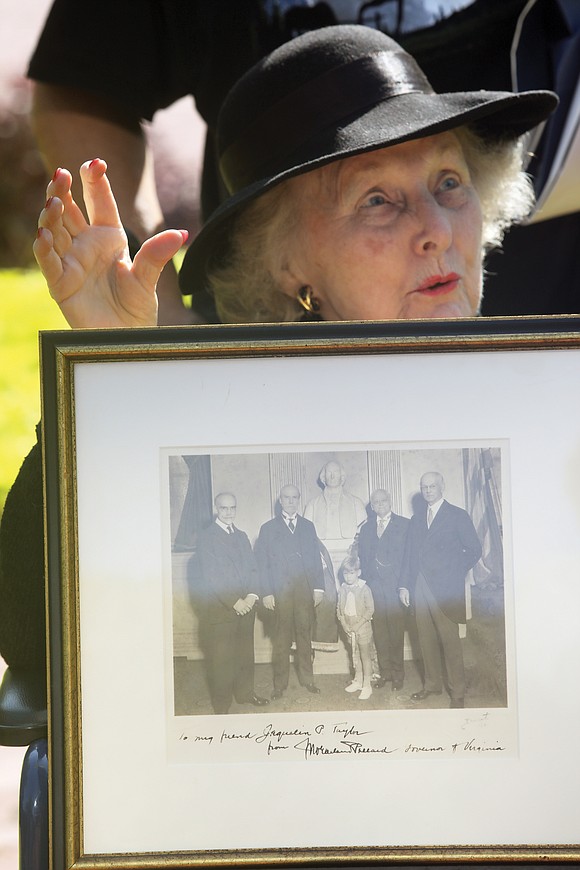Richmond judge during hearing to remove Lee statue: ‘It’s a very difficult case’
10/22/2020, 6 p.m.

The General Assembly appears to have torn away the foundation of a lawsuit seeking to stop Gov. Ralph S. Northam from removing the statue of Confederate Gen. Robert E. Lee from Monument Avenue — the giant symbol of white supremacy that has loomed over the city since 1890.
On Oct. 16, the House and Senate approved a revamped budget that includes language repealing a 131-year-old joint resolution of the 1889 legislature authorizing acceptance of the statue and promising perpetual care. The General Assembly’s budget language also authorizes $1.1 million to take down the statue and put it in storage.
During a hearing on the lawsuit Monday in Richmond Circuit Court, state Solicitor General Toby Heytens argued that the General Assembly’s vote to repeal and provide money sends the clearest message yet that Virginia’s public policy regarding the statue has changed — even if the governor has not yet signed the budget bill into law.
Mr. Heytens urged Richmond Circuit Court Judge W. Reilly Marchant to kill the lawsuit and lift his injunction that is keeping the six-story statue and pedestal in place.
Judge Marchant, who favored the plaintiffs and cited the 1889 resolution in justifying the injunction, listened to arguments, but declined to rule from the bench.
“It’s a very difficult case,” he said after listening to several hours of testimony. “It’s a difficult case for our city; it’s a difficult case for the nation.”
Because the case is expected to be appealed to the state Supreme Court, Judge Marchant said he would issue a written ruling within seven to 10 days. He kept the injunction in place until then.
The case did not draw protesters and only a few spectators because of the pandemic, including Virginia Attorney General Mark R. Herring and former City Councilman Henry W. “Chuck” Richardson, both supportive of removal of the statue.
Also in attendance was 96-year-old Helen Marie Taylor. Being helped to court in her wheelchair, the longtime resident and advocate for Monument Avenue was the driving force in bringing the lawsuit to defend the Confederate statue. But she has been eliminated as a plaintiff in the suit because her home has no connection to the land where the statue stands.
The crux of the plaintiffs’ case, according to Patrick McSweeney, lead lawyer for the three remaining property owners, “is whether the governor has the authority to order the removal of the Lee Monument.”
Mr. McSweeney previously indicated that the 1889 joint resolution — which Mr. Heytens noted did not grant private citizens the right to bring suit to enforce it — was a key factor in setting public policy, and he claimed that Gov. Northam’s unilateral action ordering the statue’s removal was unconstitutional because essentially it overrode the legislature’s will as defined by the resolution.
He could only urge the judge to declare the repeal language contained in the budget as unconstitutional for interfering in pending litigation.
The case for the plaintiffs was already tattered. Mr. McSweeney rested the plaintiff’s case without putting on a single witness to buttress other elements of their suit — that removal of the statue would diminish the value of the plaintiffs’ homes or otherwise damage their property interest.
Mr. Heytens argued that the plaintiffs’ failure to provide witnesses undermined their standing or right to bring suit and should result in the lawsuit being stricken.
The only testimony came from two historians, Edward Ayers, a Civil War scholar and former University of Richmond president, and Kevin Gaines, a specialist in civil rights history at the University of Virginia.
Both affirmed the state’s argument that that the purpose of the placement of the Lee statue 130 years ago was to show that white people had regained the political power lost in the Civil War defeat, and that Black people were returned to virtually the same subservient status as before the war.
None of the testimony, though, focused on the anguish and hurt that the statues have caused African-American residents of Richmond and the state, which Judge Marchant ruled earlier was not relevant to the case or an issue he need consider.
Mr. Heytens ticked off a list of reasons that Judge Marchant could use to lift the injunction, dismiss the lawsuit and allow the state to proceed.
But Mr. Heytens said the most important is that the state should not be forced to maintain a statue that is no longer aligned with its values — and he argued that it would break new legal ground if Judge Marchant sided with the plaintiffs to make that happen.
“I just need to emphasize one more time the extraordinary nature of the claim the plaintiffs are making here,” Mr. Heytens told Judge Marchant. “They are claiming that private parties can enlist the power of the courts to force a sovereign state to broadcast a message that the leadership of that sovereign state no longer wishes to do.”






